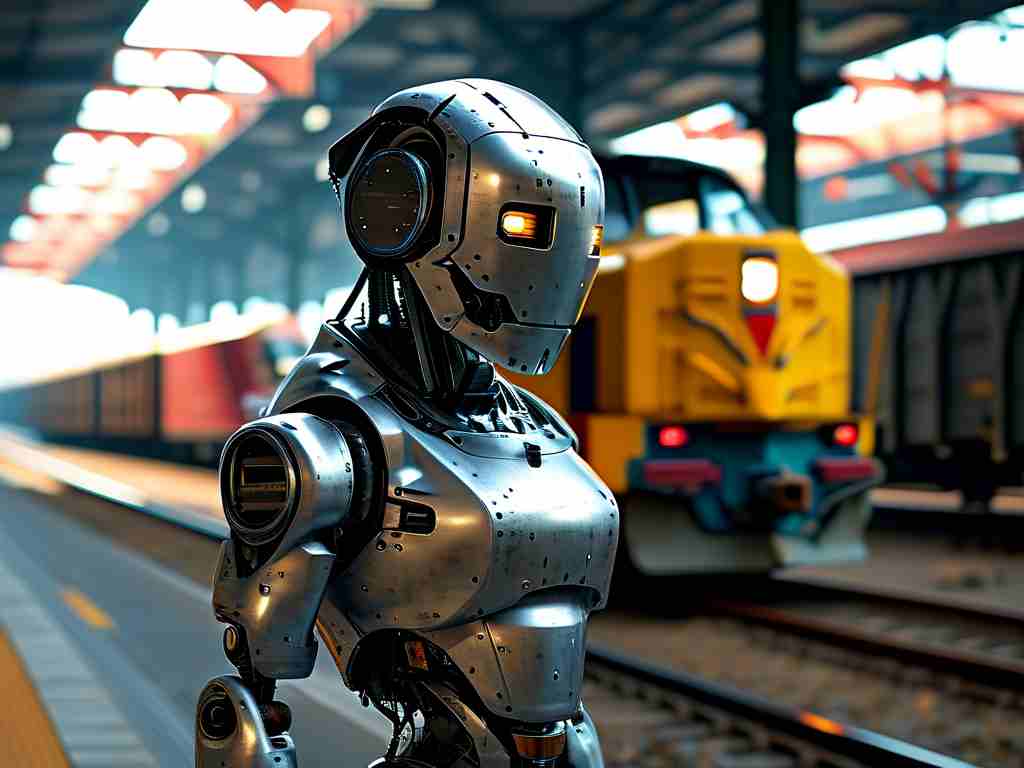Automated shunting robots are revolutionizing rail operations by integrating advanced technologies to enhance efficiency, safety, and precision. These robots, designed to manage the complex tasks of assembling and disassembling train cars, leverage cutting-edge innovations to address longstanding challenges in the railway industry. This article explores the key technological characteristics that define modern shunting robots and their transformative impact on rail logistics.

One of the most prominent features of automated shunting robots is their ability to operate autonomously in dynamic environments. Equipped with high-precision sensors and machine learning algorithms, these robots can navigate rail yards with minimal human intervention. For instance, LiDAR (Light Detection and Ranging) systems enable real-time 3D mapping, allowing robots to detect obstacles, track rail lines, and adjust their paths instantaneously. This autonomy not only reduces reliance on manual labor but also minimizes errors caused by human fatigue or oversight.
Another critical aspect is the integration of artificial intelligence (AI) for decision-making optimization. Shunting robots analyze vast amounts of data—such as wagon weights, cargo types, and destination priorities—to determine the most efficient train formation sequences. In a case study from a European freight operator, AI-driven shunting robots reduced wagon regrouping time by 40%, significantly accelerating turnaround times for cargo trains. The AI systems continuously learn from operational data, improving scheduling accuracy over time.
Energy efficiency stands out as a defining feature of next-generation shunting robots. Unlike traditional diesel-powered shunting locomotives, many modern robots utilize electric drivetrains combined with regenerative braking systems. This not only cuts carbon emissions but also lowers operational costs. A North American rail yard reported a 28% reduction in energy expenses after replacing two diesel shunters with a single electric robot capable of 24/7 operation.
Safety enhancements are equally noteworthy. Advanced collision-avoidance systems using ultrasonic sensors and computer vision ensure that robots halt operations immediately when unauthorized personnel or unexpected objects enter restricted zones. Additionally, predictive maintenance algorithms monitor components like motors and couplings, issuing alerts before potential failures occur. Such features have contributed to a 60% decline in shunting-related accidents at facilities adopting this technology.
Interoperability with existing rail infrastructure is another hallmark of these robots. Manufacturers prioritize compatibility with standard rail gauges, coupling mechanisms, and signaling protocols. This allows seamless integration into legacy systems without requiring costly infrastructure upgrades. For example, a robot deployed in Japan’s aging rail network successfully synchronized with decades-old track sensors through adaptive communication modules.
The role of cloud computing and IoT (Internet of Things) connectivity cannot be overstated. Real-time data exchange between shunting robots, control centers, and other logistics systems enables coordinated fleet management. During peak cargo seasons, multiple robots can collaboratively adjust their tasks based on live updates about incoming trains and loading dock availability. This level of connectivity was instrumental in helping a Chinese logistics hub handle a 35% surge in holiday-season freight volume without delays.
Despite these advancements, challenges persist. Cybersecurity remains a concern as increased connectivity expands potential attack surfaces. However, developers are implementing blockchain-based authentication and encrypted data pipelines to safeguard operations. Another ongoing development area involves enhancing robot adaptability to extreme weather conditions—a crucial requirement for regions with harsh winters or frequent sandstorms.
Looking ahead, the convergence of 5G networks and edge computing promises to unlock new capabilities. Ultra-low latency communication will enable split-second decision-making during complex shunting maneuvers, while localized data processing reduces reliance on central servers. Trials in Germany have demonstrated that 5G-enabled robots can complete intricate wagon rearrangement tasks 22% faster than previous models.
In , automated shunting robots represent a synthesis of autonomy, intelligence, and sustainability. By addressing core operational challenges through technological innovation, these systems are setting new benchmarks for reliability and efficiency in rail transport. As research continues to refine their capabilities, shunting robots will undoubtedly play a pivotal role in shaping the future of global logistics networks.

